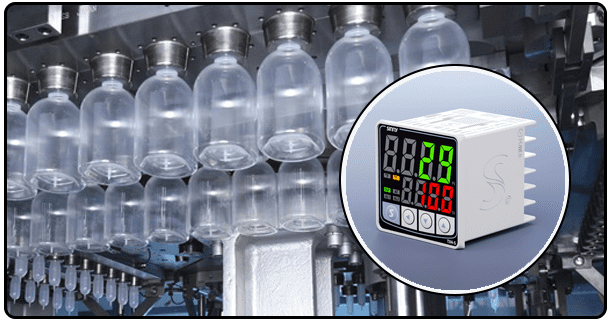Discover DIY Temperature Controller Projects for Beginners
Experience beginner-friendly DIY temperature controller projects using Arduino, sensors, and relays - great for incubators, brewing, or smart home systems!
1. Introduction
Temperature control is essential to many industrial and household applications, from maintaining incubator environments to optimal brewing conditions. DIY temperature controller projects allow beginners to gain hands-on experience with electronics, programming, and device creation while learning practical skills such as electronics design. This article will walk you through several beginner-friendly DIY temperature controller projects while outlining all the necessary materials and steps for their successful completion.
2. An Understanding of Temperature Controllers
Definition
Temperature controllers are devices designed to maintain an ideal environment by monitoring and regulating current temperature readings to adjust heating or cooling mechanisms accordingly. They usually consist of sensors for measuring ambient air temperatures, controllers that interpret data about these measurements, and output devices that regulate these settings accordingly.
Temperature Controller Types:
Various temperature controllers, including On/Off, Proportional, and PID (Proportional-Integral-Derivative). DIY projects use simple On/Off controllers or pri PID controllers due to their ease of implementation and effectiveness at maintaining stable temperatures.
3. Tools and Materials Needed
Essential Tools:
To embark upon DIY temperature controller projects, some basic tools are essential:
* Soldering Iron: for connecting components
* Multimeter: Used to measure voltage, current, and resistance accurately.
* Breadboard: Used for prototyping circuits without soldering.
* Jumper Wires: These are for making connections on the breadboard.
Components Needed for These Projects:
The components required for these projects include:
* Arduino is a microcontroller board used as the brain of any given project.
* Temperature Sensors like the T allow us to track temperature accurately.
* Relays: Relays can switch heating/cooling devices on and off.
*LCD Display: To provide temperature readings and settings.
* Power Supply: Used to power Arduino and its associated components.
Safety Equipment:
For optimal electrical work, always wear safety equipment, including:
* Gloves to protect hands from burns or electrical shocks
* Safety Glasses: For protection from soldering splashes and debris.
4. Simple DIY Temperature Controller Projects
Project 1: Basic On/Off Temperature Controller:
The Aim is to create an on/off thermostat using Arduino, a relay module, and a TMP36 sensor as components of this DIY temperature control project. Steps to completion include connecting all necessary elements (Arduino + TMP36 sensor + relay module+breadboard/Jumper wires, etc.).
Steps:
1. Connect the temperature sensor to Arduino: Connecting the TMP36 temperature sensor via its VCC, GND, and signal pins will do the same.
2. Program Arduino: Create a simple code that reads sensor temperature readings and manages the relay based on threshold temperatures.
3. Connect Relay Module and Fan/Heating Element to Arduino: Connect the relay module and heating element or fan directly.
4. Test Setup: Upload code onto the Arduino and test system by altering temperature while watching how well its response to switching relay contacts behaves.
Applications: This project is ideal for incubators, miniature greenhouses, or any application that requires basic temperature regulation.
Project 2: PID Temperature Controller:
Our objective for Project 2 is to create an advanced temperature controller using PID control, Arduino, the DS18B20 temperature sensor, a solid state relay (SSR), an LCD display breadboard, and jumper wires as components.
Steps:
1. Connect the Temperature Sensor and SSR: Attach the DS18B20 sensor and SSR to the Arduino.
2. Program the Arduino with PID Control: Implement a PID control algorithm in the Arduino code to maintain a stable temperature.
3. Display Temperature and Setpoint: Use the LCD display to show the current temperature and setpoint.
4. Test and Fine-Tune: Upload the code and test the system, adjusting the PID parameters for optimal performance.
Applications: Suitable for brewing, fermentation, and other applications requiring precise temperature control.
5. Tips for Successful DIY Projects
Planning and Design:
It is crucial to ensure a smooth building experience to plan and design any DIY project from its inception, from planning its layout and connections through visualizing its connections and layout, identifying any potential issues as early as possible, and creating a schematic diagram to illustrate everything involved in making it. Having this visual aid also aids in the identification process for potential issues as they emerge, ensuring a more effortless construction experience overall.
Troubleshooting and Testing:
Testing is an integral component of DIY projects. Once assembled, check each component individually to ensure it works as intended - common issues include loose connections, incorrect wiring, and defective parts - before using a multimeter to check continuity and voltage levels.
Safety Considerations:
Always place safety as your top priority when working with electrical components. Please ensure your workspace is free from flammable materials, use insulated tools and try not to work directly on live circuits. If you need more clarification on any step during the assembly or modification process, please seek guidance from knowledgeable individuals or trustworthy online sources.
In conclusion, DIY temperature controller projects provide beginners with an excellent opportunity to gain knowledge in electronics and programming while building valuable devices. By following our projects and tips, it should be possible for anyone to successfully construct and use their own temperature controllers - projects which not only expand technical skills, but also shed light on its various uses across applications.
- Discover the Top Temperature Controller Brands to Trust in 2024
- Common Problems with Temperature Controllers and How to Solve Them























